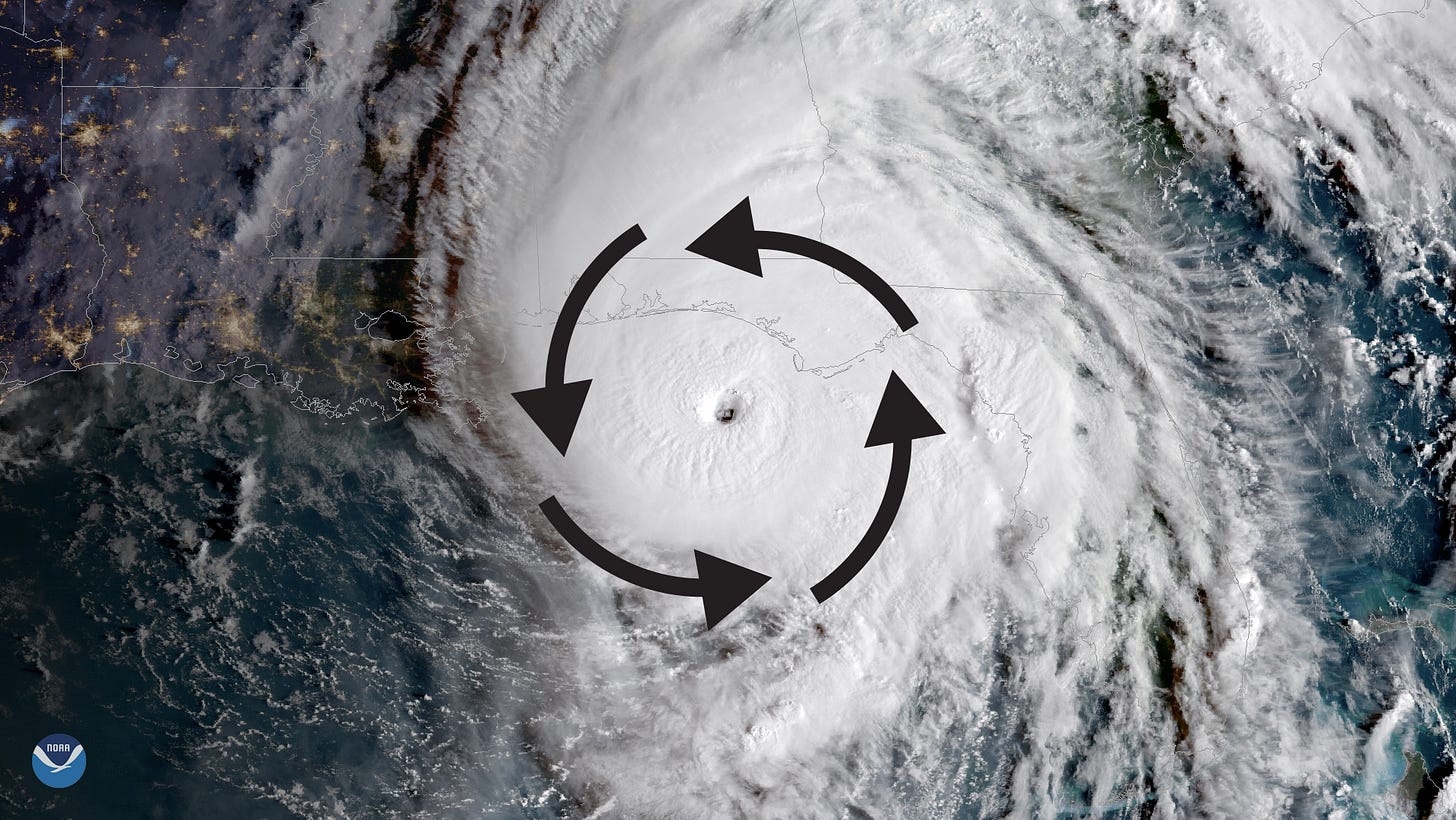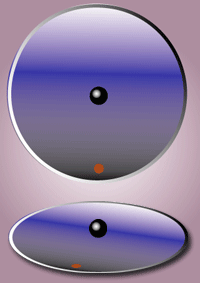Why do hurricanes spin (counter)clockwise?
Pull up any satellite image of a hurricane approaching the US East Coast and you'll see that unmistakable counterclockwise spiral. Look at a typhoon bearing down on the Philippines, and it spins the same direction. But check out a cyclone swirling toward Australia, and suddenly everything rotates clockwise. The direction is determined by which side of the equator these massive storm systems form.
This rotational behavior stems from the Coriolis effect, a sometimes confusing consequence of living on a spinning planet. Earth completes one rotation every 24 hours, but different parts of the planet move at different speeds to maintain that schedule. The equator travels roughly 1,040 mph to complete its massive circumference, while points closer to the poles cover much smaller distances in the same time period, therefore traveling slower through space.
When air moves from high pressure to low pressure areas - the basic mechanism that drives all weather - it doesn't travel in straight lines. The rotation of the Earth beneath the moving air causes it to curve in our reference frame. This deflection always bends to the right in the Northern Hemisphere and to the left in the Southern Hemisphere. The air itself moves in a straight line through space, but we perceive it as curving because Earth has rotated beneath it.

The Coriolis effect only becomes significant for phenomena that operate over large distances and time scales. It takes hundreds of miles and several hours or more for the rotation of the Earth to be important enough. This is why hurricanes and large weather systems show clear rotational patterns, while small-scale flows like water draining from your bathtub are dominated by the shape of the basin and how the water was introduced.
The effect also becomes more pronounced at higher latitudes, which explains why hurricanes rarely form near the equator. Within about 5 degrees of the equatorial line, the Coriolis force is too weak to generate the rotation necessary for cyclone formation. Countries like Ecuador or Singapore don't tend to face hurricane threats despite their coastal locations.
Now let's consider what happens when air flows toward a developing low-pressure system in the Northern Hemisphere. The Coriolis effect deflects this inward-flowing air to the right. As air spirals inward, conservation of angular momentum starts to play a role. The same physics that makes a figure skater spin faster when pulling their arms closer to their body works on the air. The combination of inward flow, rightward deflection, and increasing spin creates the counterclockwise rotation we see from space.
The Southern Hemisphere experiences the mirror image. Air deflects to the left instead of the right, creating clockwise rotation in cyclones and typhoons. Same physics, opposite direction.

As air spirals inward and spins faster due to angular momentum conservation, it eventually reaches a point where centrifugal force prevents it from moving any closer to the center. This air is forced upward in violent thunderstorms, creating the eyewall. The strongest winds in a hurricane occur in this eyewall. Meanwhile, air in the very center of the storm sinks back down, warming and drying as it descends. This subsidence creates the hurricane's famous eye.
On the East side of a northward-moving hurricane in the Northern Hemisphere, the storm's forward motion adds to the rotational winds. If the hurricane has 100 mph rotational winds and moves forward at 20 mph, the right side experiences winds of 120 mph. On the West side, the forward motion subtracts from the rotational winds, creating 80 mph conditions. This asymmetry explains why meteorologists pay special attention to a storm's right front quadrant, where the combination of forward motion and rotation creates the most destructive conditions.
The storm's track and speed therefore determine not just where it will make landfall, but which areas will face the most severe winds. A fast-moving hurricane intensifies this effect, while a slow-moving storm spreads its destruction more evenly around the eye. Whether it's called a hurricane, typhoon, or cyclone, they all spin the way the Coriolis force tell them to.
Further Reading:

